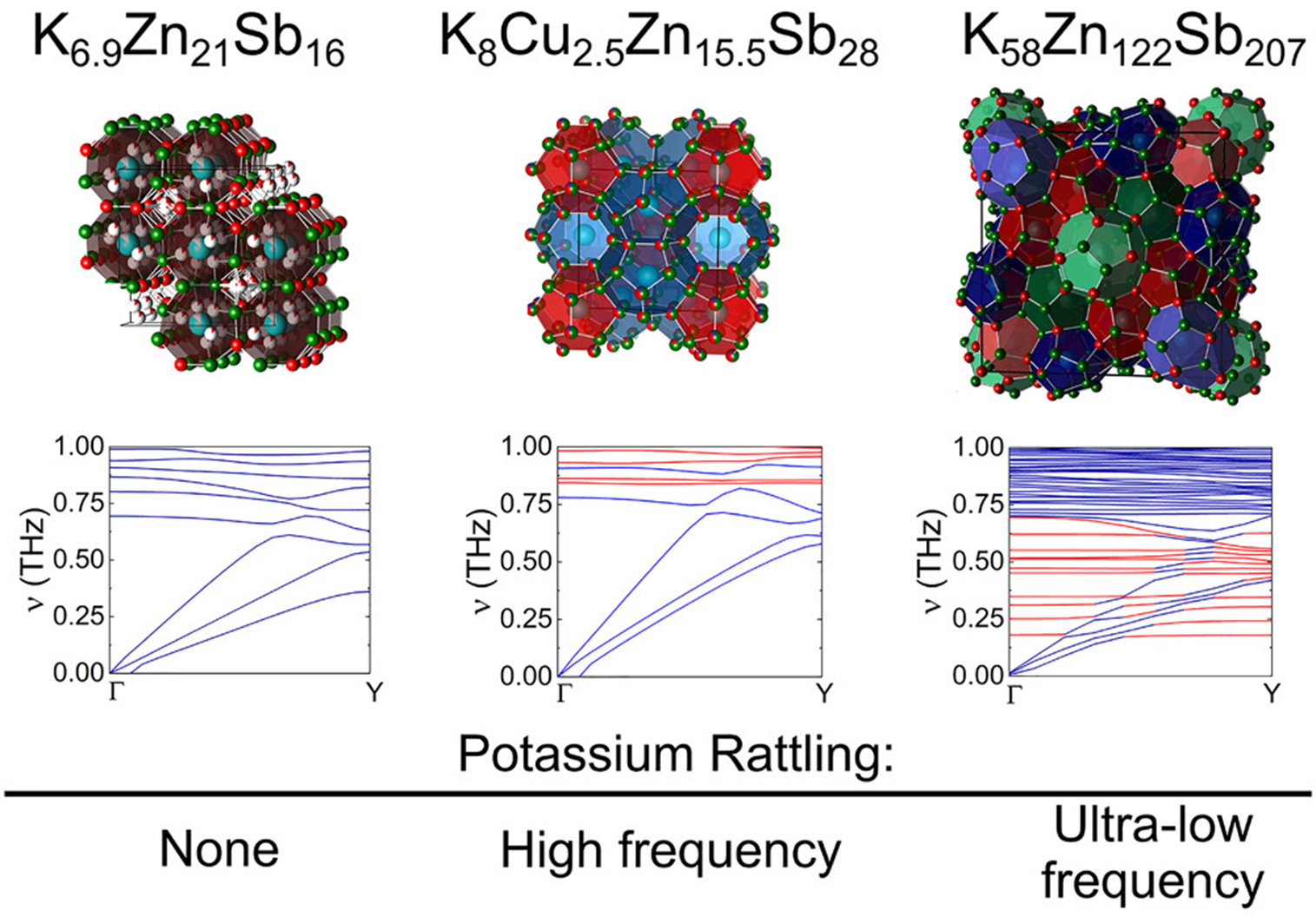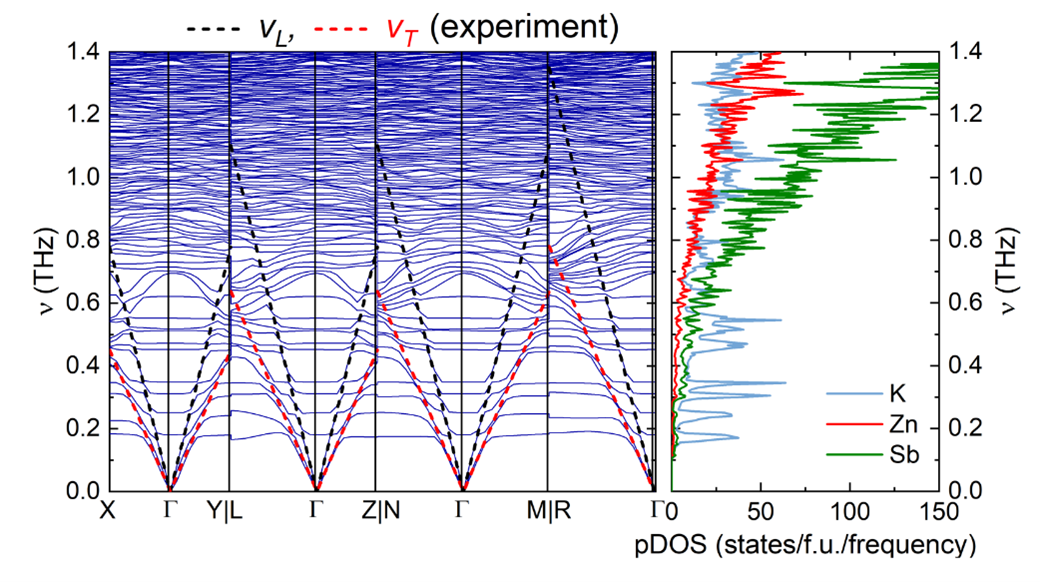Strong Scattering from Low-Frequency Rattling Modes Results in Low Thermal Conductivity in Antimonide Clathrate Compounds
Title: Strong Scattering from Low-Frequency Rattling Modes Results in Low Thermal Conductivity in Antimonide Clathrate Compounds
Authors: K. M. Ciesielski*, B. R. Ortiz, L. C. Gomes, V. Meschke, J. Adamczyk, T. L. Braden, D. Kaczorowski, E. Ertekin, and E. S. Toberer*
Journal: Chemistry of Materials
DOI: 10.1021/acs.chemmater.2c03821

Exploration of ternary chemical spaces containing alkaline elements, transition metals and main group elements in recent years led to discovery of several structurally complex compounds. Among those, the most prominent group are pnictide-based clathrates. Materials from this group are known for ultra-low thermal conductivity, which is beneficial from perspective of plausible thermoelectric applications. The paper by Ciesielski et al. reveals origin of suppressed thermal transport in three cavity-based compounds from K-Zn-Sb system: type-XI clathrate K58Zn122Sb207, the tunnel compound K6.9Zn21Sb16, and the type-I clathrate K8Zn15.5Cu2.5Sb28 (the last phase discovered herein). Both clathrates show extremely low thermal conductivity even at room temperature, 0.41 and 0.53 Wm-1K-1 for type-XI and type-I compounds, respectively. The tunnel structure exhibits a higher thermal conductivity of 0.79 Wm-1K-1.
The combination of phonon calculations and experiments enables a cohesive picture of the thermal transport in these K-Zn-Sb compounds to form. The ultralow thermal conductivity arises due to (i) structural complexity, (ii) soft bonding, and (iii) rattling. For all three compounds, the structural complexity results in an abundance of low velocity and strongly overlapping optical modes. In such a situation, the quasiparticle description no longer applies, and a more localized diffuson scenario emerges. Furthermore, the soft Zn-Sb bonding yields low acoustic mode group velocities. What changes between the materials is magnitude of the thermally induced vibrations of potassium atoms. The tunnel compound hosts potassium atoms in constrained environment and hence rattling is not observed. For type-I phase, we observe high-frequency rattling in moderately sized cages. Structure of type-XI clathrate includes extremely oversized cavities (290 Å3), which lead to low-frequency ratting of K species. Modeling reveals that low frequency rattling modes profoundly limit the acoustic scattering time; the scattering time of the type-XI clathrate is half that of the type-I clathrate and a quarter of that of the tunnel compound. Understanding the details of thermal transport in structurally complex materials will be crucial for developing the next generation of thermoelectrics.

See also
- The Institute
- General information
- Employees
- News
- Scientific News
- Gender equality plan
- Address and contact data
- Research
- Research profile
- List of publications
- List of projects
- International cooperation
- Information in BIP
- Scientific Council
- Organizational structure
- GDPR


